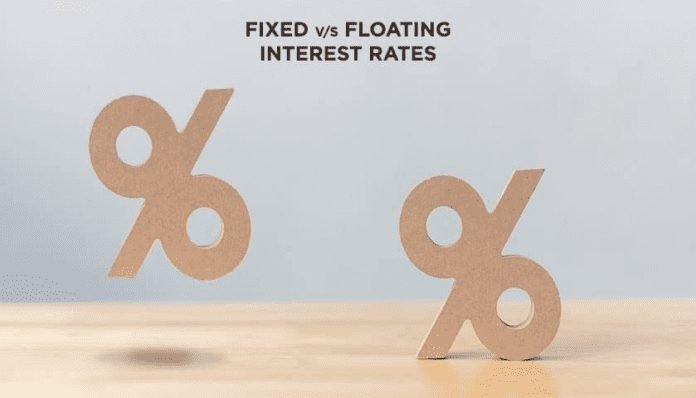Last Updated on March 3, 2024 by Saira Farman
The Reserve Bank of India revised the repo rate by 40 basis points to 4% on 22nd May 2020. Resultantly, the interest rates on different loans have also altered significantly.
However, not every borrower was at the end of this benefit, but individuals who opted for floating interest have saved on interest payments. Therefore, before applying for a loan, it is imperative to decide the interest option to go along with. In this regard, one must know the difference between fixed vs floating interest rates to make an informed decision.
Table of Contents
What is a floating interest rate?
As the name suggests, this rate of interest keeps changing throughout the tenure. Lenders revise it at regular intervals following the market rates.
A point to note here is that the rate of interest charged by financial institutions is associated with the base rate determined by the RBI. Therefore, whenever there is any alteration to the base rate, the interest rate on different financial products also changes.
Benefits of floating rate of interest
Here are some notable benefits of this interest calculation method –
- It is usually lower than its fixed counterpart. Even though interest rates may increase during the tenure, the total burden will most likely remain lower than what it will be with a fixed interest rate.
- An increase in a floating rate of interest will not change the EMIs. In turn, tenure gets affected.
When to opt for a floating rate of interest?
While applying for a personal loan or any other financial product, if a borrower perceives that the base rate will remain static or go down in time, he/she can opt for this interest rate option.
Also, experts suggest that if an applicant has the provision to make part prepayments, then floating rates are ideal. Since there are no pre-payment charges applicable here, individuals can make lump-sum payments and reduce their loan burden. Individuals can use a personal loan calculator to make the necessary calculation about repayments.
To complete this fixed vs floating interest rate comparison, one must also understand a fixed rate of interest.
What is a fixed interest rate?
Personal loan interest rates are charged in a fixed manner, as well. Under this method, the interest rate on loans does not alter with market rates. Instead, it remains static throughout the tenure. Typically, fixed interest rates are 1%-2% higher than the floating ones.
The biggest benefit of a fixed rate of interest is that it offers a sense of certainty regarding loan repayments. Borrowers know beforehand about the interest rate, EMIs and loan tenure. Thus, they can make financial planning accordingly.
The fixed interest rate method is an excellent option for individuals who do not like to take a risk and play it safe.
On the other hand, individuals who want to secure lower rates may consider floating interest calculation methods. Several reputed financial institutions offer loans as high as Rs.25 lakh on floating rates.
Furthermore, the pre-approved offers extended by lenders like Bajaj Finserv make the loan application a hassle-free experience. It streamlines the process and saves time. This offer is applicable to other financial products like credit cards, business loans, etc. Applicants can check their pre-approved personal loan offers by submitting the essential personal and contact details.
Since interest rates will affect the instalments and overall financial planning, it is vital to make an informed decision, before applying for a personal loan. Therefore, one must perform due diligence before deciding which one to go for, fixed vs floating interest rates.
Read more: Everything About PRINCE2 Project Management
















